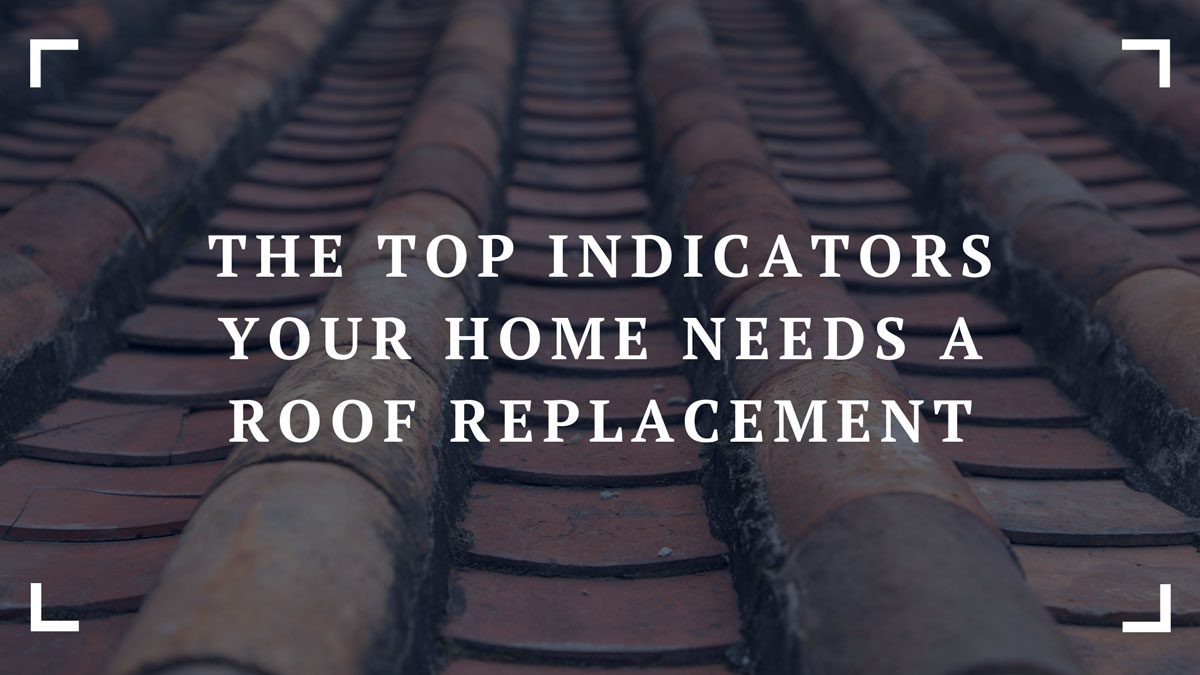A roof over your head does more than just provide shelter; it plays a critical role in safeguarding your home against environmental elements and maintaining its structural integrity. However, like all components of your home, the roof has a finite lifespan and requires attention to ensure it continues to perform its vital functions.
Recognizing the signs that your roof needs replacement is essential to prevent minor issues from escalating into major problems. In this guide, we’ll explore the top 7 indicators that suggest it’s time to consider a roof replacement, helping you make informed decisions about maintaining and protecting your home.

Aging Roof
Most roofs are designed to last between 20 to 25 years, depending on the materials used and the craftsmanship of the installation. If your roof is approaching or has surpassed this age bracket, it’s a strong indicator that you should start considering replacement. Aging roofs may not show visible signs of wear and tear initially, but their ability to protect your home diminishes over time, making them more susceptible to damage. It’s best to have a professional assess the condition of your roof and give you an estimate for potential replacement.
Curled or Missing Shingles
Shingles that are curled, cracked, or missing entirely are clear signs that your roof needs attention. These discrepancies are more than just cosmetic issues; they represent vulnerabilities in your roof’s defense against water and moisture intrusion. If you notice a significant number of affected shingles, it might be more cost-effective to replace the roof rather than repair it. Also, keep in mind that shingles can curl due to a simple lack of maintenance. Regularly cleaning your roof and removing debris can prevent moisture from accumulating and causing damage.
Additionally, if you notice shingle granules in your gutters or on the ground near your home, it’s a sign that your roof is deteriorating and may need replacement soon. Shingles lose their protective granules as they age, making them more susceptible to damage and reducing their lifespan.
Frequent Leaks
Frequent or multiple leaks, especially after typical rainfall, indicate a compromised roofing system. While an isolated leak can often be repaired, recurring leaks suggest widespread deterioration. Consistent water intrusion can lead to mold growth, structural damage, and ruined insulation, necessitating a comprehensive roof replacement. As these experts add, your roofer will analyze your roof’s waterproofing and identify any potential problem that could develop into a leak or structural damage if left unattended. Plus, regular roof inspections can help detect and resolve any issues before they escalate.
Sagging Roof Deck
A sagging roof is a sign of structural issues, either due to water damage or an inadequately supported roof underlayment. This condition requires immediate attention as it poses a significant risk to the safety and integrity of your home. A sagging roof cannot be remedied by simple repairs and often warrants a full replacement. It’s best to contact a professional immediately if you notice any signs of sagging in your roof.
Granules in the Gutters
Finding granules from your shingles in the gutters is common soon after a new roof is installed, but it’s a warning sign in older roofs. These granules protect from UV rays and weather elements. When shingles begin to lose these granules, their functionality is compromised, leading to accelerated aging and decay. If you notice an excessive amount of granules in your gutters, it’s time to consider a roof replacement.
Moss or Algae Growth
While moss or algae growth on your roof doesn’t necessarily signal immediate doom, it can point to underlying moisture issues. Over time, these growths can cause the roofing materials to deteriorate, especially if left untreated. In severe cases, a roof replacement may be necessary to address the moisture problem thoroughly.
Energy Bills Are Increasing
An inefficient roof can lead to higher heating and cooling costs. If you’ve noticed a gradual increase in your energy bills without a corresponding change in usage patterns, your roof might be to blame. Poor insulation and air leaks can force your HVAC system to work harder, indicating the need for a roof inspection and possibly a replacement to improve your home’s energy efficiency.

In conclusion, monitoring the condition of your roof is crucial for maintaining the safety, efficiency, and value of your home. Recognizing the signs of a failing roof, such as aging materials, visible damage to shingles, frequent leaks, a sagging roof deck, loss of granular material, unwanted growths, and rising energy costs, can save you from more extensive and expensive repairs in the future.
Regular inspections and maintenance are key to extending the life of your roof, but when these signs start to appear, it may be time to consider a replacement. Consulting with a professional roofing contractor can help you assess the state of your roof and make an informed decision about whether to repair or replace it. Remember, investing in a new roof not only protects your home but also enhances its overall value and appeal.


